
Trace des Ruisseaux
16 points of interest
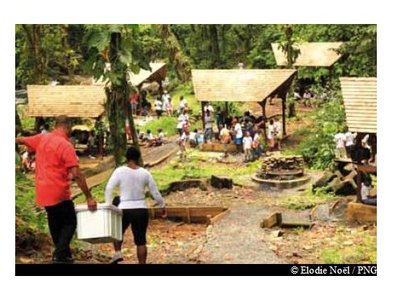
aire de pique-nique de la Maison de la Forêt - Elodie Noël / PNG  Area of relaxation
Area of relaxationPicnic area
The picnic area is set up with huts and barbecue grills. The swimming area is easily accessible.
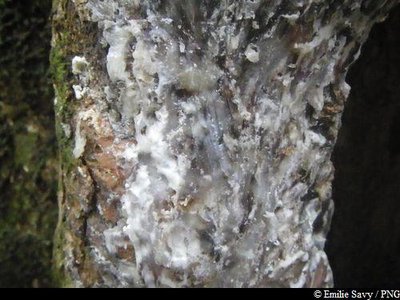
résine de Gommier blanc - Emilie Savy / PNG  Flora
FloraGommier
The Gommier (Dacryodes excelsa) can grow up to 35 metres tall. When they are damaged, its white trunk and roots exude a white resin with a pungent turpentine smell, which is traditionally used as incense or as kindle-wood, because it burns slowly regardless of the surrounding humidity. It is said that the tree has the ability to cast out spirits. It is strictly forbidden to remove any plant parts from the National Park.
Its trunk was used by American Indians to make their canoes (kanawa), and is still used today by coastal people from many tropical countries, such as Dominique, to craft fishing vessels. The tree's seeds are a favourite food among pigeons.
Fougère arborescente - PNG  Flora
FloraTree fern
A member of the Cyatheaceae family, Cyathea sp. includes six species, the biggest of which (C. Arborea) can grow beyond 18 metres. Contrary to what the name suggests, tree ferns are not actually trees. The young leaves have the distinctive shape of a cross, while the black trunk is lined with petiole remnants. The fibrous material at the base of the stipe can be used to make sculptures and containers.
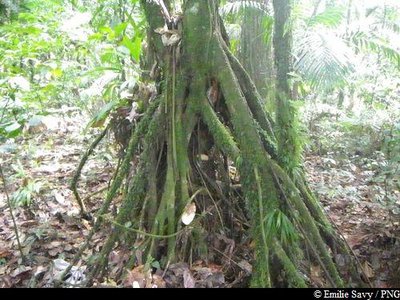
Palétuvier jaune - Emilie Savy / PNG  Flora
FloraSymphonia globulifera
A member of the Clusiaceae family, Symphonia globulifera is a tree that is often found in the rainforest or in swampy forest areas. Reaching up to 25-30 metres in height, it has stilt roots and a yellowish latex trunk. Its flowers are notable for their bright red petals, with oval fruits that resemble nutmeg and that are yellow when ripe. It wood was used as timber for houses and its latex resin was used to make boats.
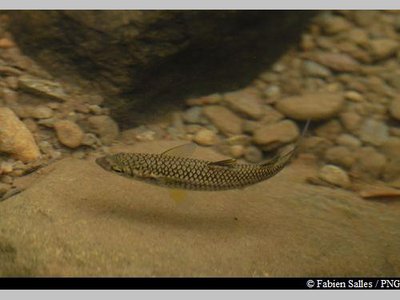
Mulet des montagnes - Fabien Salles / PNG  River and waterfall
River and waterfallAccess to a pool
Fine clear water pool on the Bras David river.
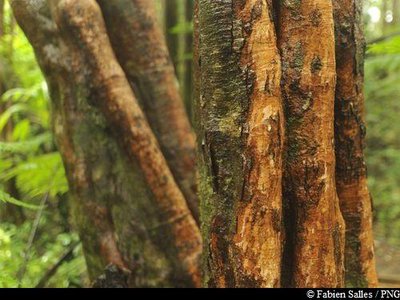
Bois cotelette noir (détail du tronc) - Fabien Salles / PNG  Flora
FloraTapura latifolia
A member of the Melastomaceae family, Tapura latifolia is a small tree with a fluted trunk that seldom grows beyond 20 metres. Its leaves feature five main lengthways veins that run perpendicular to its many secondary veins.
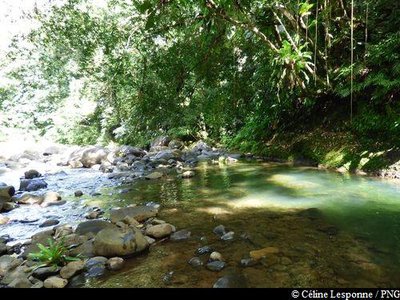
bassin sur la Rivière Bras David - Céline Lesponne / PNG  River and waterfall
River and waterfallAccess to a pool
Access to a large pool on the Bras David river.
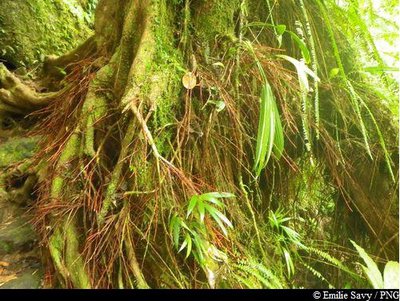
bois rouge carapate - Emilie Savy / PNG  Flora
FloraAmanoa caribeae
A member of the Euphorbiacieae family, Amanoa caribeae is endemic to the Lesser Antilles. It is a large tree with a trunk that rests straight on its buttresses, depending on the terrain. The most distinctive features of this species are its reddish bark and roots at the base of the trunk. Its leaves vary in shape: sometimes they are whole, sometimes pointed, while its flowers form small clusters. The hard wood of this tree was used in carpentry or joinery.
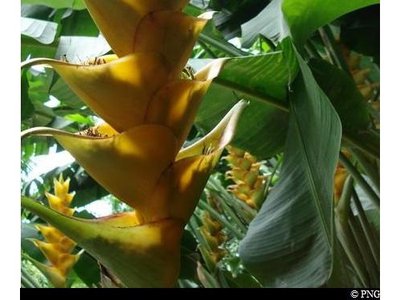
Balisiers - PNG  Flora
FloraBalisiers
A member of the Musaceae family, Heliconia caribaea is a large grass that is typical of the Lesser Antilles tropical rainforest. A member of the same family as the banana trees, the plant can grow up to 5 m high. It features an inflorescence that resembles a red ear or red ear with yellow trim, or sometimes completely yellow. Its flowers are visible all year round, most notably between April and June.
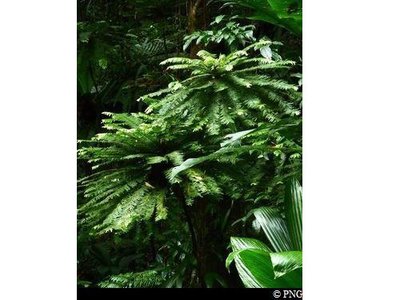
"Fougère bâtard" - PNG  Flora
FloraPhyllanthus mimosoides
Phyllanthus mimosoides, a member of the Euphorbiacieae family, resembles a small tree fern. Set on the same level, its compound leaves are in fact branches made up of small, simple leaves. Lower down, they have tiny white flowers on their axils.
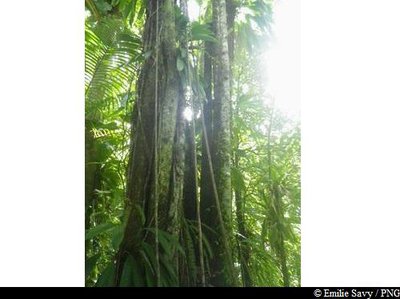
Corossolier montagne - Emilie Savy / PNG  Flora
FloraGuatteria caribeae
Guatteria caribeae is a very straight tree in the Annonaceae family that often has multiple trunks. It has dark bark and hanging branches, producing dark and plump berries.
Its bark was used to make ropes and its wood to make masts for boats. It is still used to make traditional sailing boats (kanot).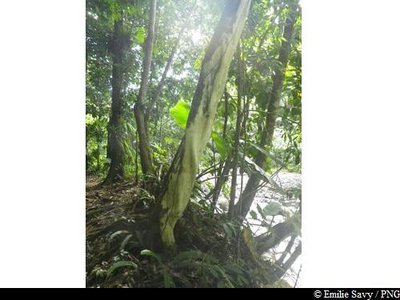
Bois cotelette blanc - Emilie Savy / PNG  Flora
FloraMiconia mirabilis
Miconia mirablis is a hardwood tree with white bark and a fluted trunk.
As is so distinctive of pioneer plants, it loves light. It is often found on paths alongside tree ferns or trumpet trees.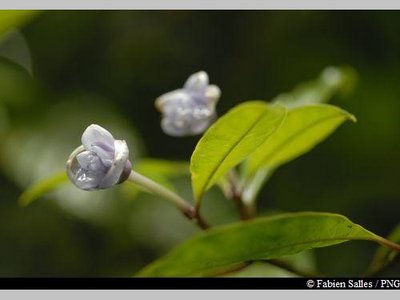
Fleur bleue - Fabien Salles / PNG  Flora
FloraPsychotria urbaniana
Psychotria urbaniana belongs to the Rubiaceae family.
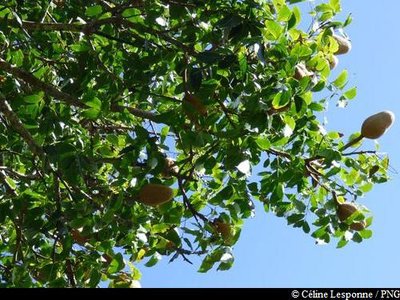
Mahogany Grandes Feuilles - Céline Lesponne / PNG  Flora
FloraWest Indian Mahogany
A member of the Meliaceae family, Swietennia macrophylla is a perennial tree with a straight, cylindrical bole. It has small, yellow-green flowers. This species was introduced in order to produce timber. Because of its hardness and colouration, the wood is highly prized by cabinet makers, which has resulted in it being over-exploited in its native area. It is listed in Appendix II of the threatened species covered by the Washington Convention.

"Ailes à mouche" - Fabien Salles / PNG  Flora
Flora"Ailes à mouche"
A member of the Cyclantaceae family, the local name for Asplundia rigida can be translated literally as "fly wings" on account of its similarity with the insect. A typical species of moist forest undergrowth, there are three species in the Asplundia genus. Two terrestrial and one epiphytic and lianescent (vines climbing from aerial routes).
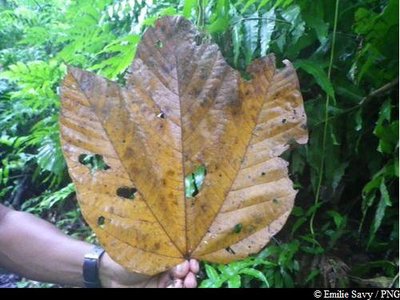
feuille de Mapou Baril - Emilie Savy / PNG  Flora
FloraMapou baril
Sterculia caribea, known in Créole as Mapou baril, is endemic to the Lesser Antilles. The leaves of this plant can differ depending on its age. Its flowers appear in the form of a bunch of small yellow and pink bells. It produces quite distinctive fruits that cluster together in groups of four or five in woody follicles: they are lined on the inside with dark red urticating bristles.
Description
Hiking trail colour: yellow
From the upper parking area of Maison de la Forêt, take the path that goes down towards the Bras David river. Walk through the picnic area. Walk up alongside the river to the right and find the start of the "Trace des Ruisseaux" (Trail of Streams) which heads into the forest. Go past the hut, carrying straight on. A few trails rejoin the picturesque pools on the left. At the next intersection, stay on the left-hand path: the large, circular trail (there is a shortcut on the right through the small loop). Keep going, the trail joins the start point along the road towards the Pins Caraïbes. At the intersection, turn left to return directly to the parking area or right to return to the huts and river below. When you arrive, you may wish to visit the Maison de la Forêt (see opening hours).
- Departure : Maison de la Forêt, Petit-Bourg
- Arrival : Maison de la Forêt, Petit-Bourg
- Towns crossed : Petit-Bourg
Altimetric profile
Recommandations
Pay attention to cars on Route RD23, as it is a major road.
There are no litter bins on the route, so please be considerate and take your rubbish with you.
Extra care should be taken in this natural environment, as Guadeloupe is prone to natural risks. For the benefit of all hikers, it is very important that you behave responsibly.
Please note: the parking and swimming areas are not supervised.
Information desks
Maison de la Forêt
RD 23 - Route de la Traversée, 97170 Petit-Bourg
Opening hours :
- In low season (May 1 to June 30 and September 1 to October 31) : every day (except weekends) from 9 am to 4.30 pm.
- In high season (November 1 to April 30 and from July 1 to August 31) : every day from 9 am to 4.30 pm ; sunday from 9 am to 12.30 pm.
Services: reception, permanent exhibition, free parking, picnic area nearby. Building accessible to people with reduced mobility.
Please note : parkings are not supervised.
Localisation GPS : Lat: 16,17600 N - Lng: 61,69280 W.
Access and parking
GPS coordinates of the start point : Lat : 16,17600 N - Long : 61,69280 W.
From Bouillante or Petit-Bourg: take Route de la Traversée (RD23). Stop at one of the Maison de la Forêt parking areas.
Parking :
Source
Report a problem or an error
If you have found an error on this page or if you have noticed any problems during your hike, please report them to us here:

